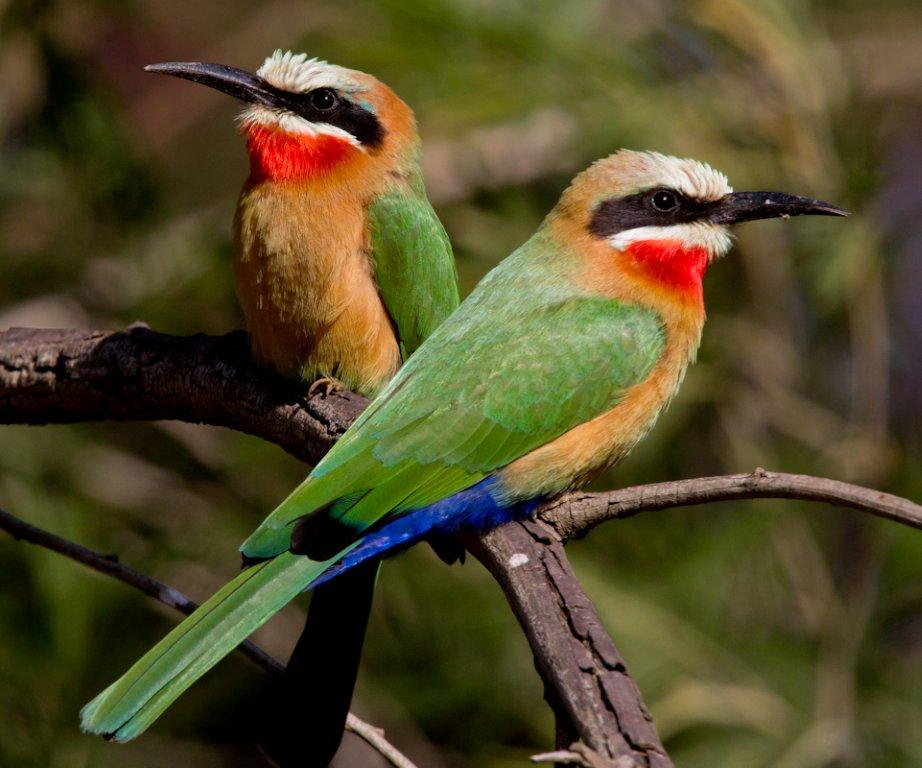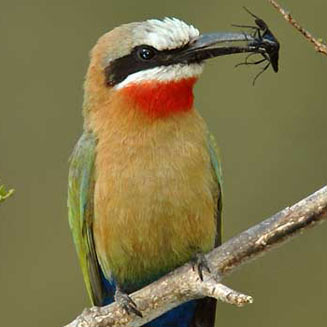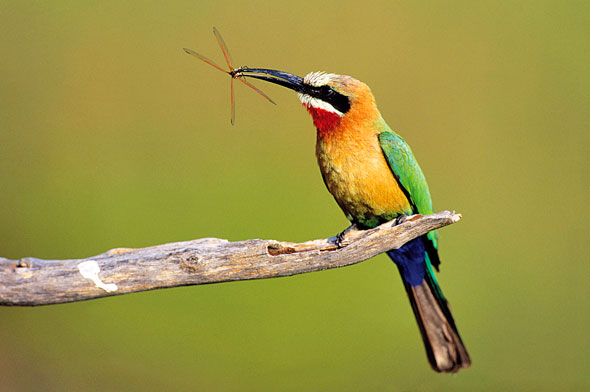
Merops bullockoides
TAXONOMY
Merops bullockoides A. Smith, 1834, Marico River, South Africa.
Sometimes considered a subspecies of M. bullocki. Monotypic.
OTHER COMMON NAMES
French: Guкpier а front blanc; German: Weissstirnspint; Spanish:
Abejaruco Frentiblanco.
PHYSICAL CHARACTERISTICS
8.5–9.5 in (22–24 cm); 1–1.4 oz (28–38 g). Upperparts and
wings are blue-tinged green; underparts are buff; thighs and
undertail coverts are blue; spread tail is green above and blackish
below. White forehead, cheeks, and chin are sharply defined
from the black mask and red throat.
DISTRIBUTION
Occurs south of the forested Congo basin across the breadth of
Africa. Locally common north along the Rift Valley in Kenya
to Lake Turkana, and on the west side of Lake Tanganyika
north to Rwanda.
HABITAT
Occupies wooded savannas.
BEHAVIOR
Among the most social of all bee-eaters, roosting and breeding
in large colonies (up to 400 nests) and interacting in extended
family groups throughout its life. Sedentary in Kenya, but may
move widely during the non-breeding season in the southern
range.
FEEDING ECOLOGY AND DIET
Family groups or clans defend foraging territories up to 4.5 mi
(7 km) from the roosting/breeding colony. Within territories,
members of the clan spend most of the time spaced apart on
favorite perches, from which they make sallies for insect prey.
REPRODUCTIVE BIOLOGY
Throughout most of the range, breeding begins at the end of the
dry season, August to October. In Kenya, where there are two
somewhat unpredictable rainy periods, egg-laying may begin in
October to November, or April to May, but any given population
breeds during only one season. Clutch size is two to five eggs.
Cooperative breeding is common. Sixty percent of nests
have one or more helpers (up to five), usually males.
CONSERVATION STATUS
Not threatened.
SIGNIFICANCE TO HUMANS
None known.
Other popular Animals
Photo Gallery of - White-fronted bee-eater




 Animalia Life
Animalia Life